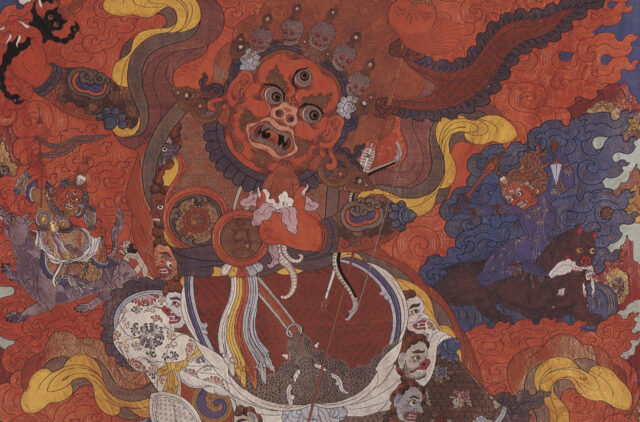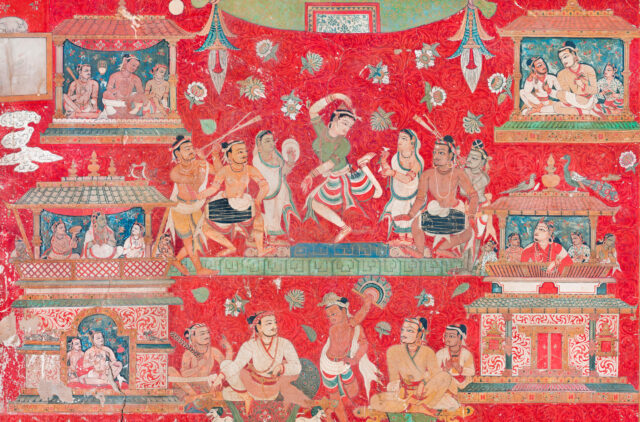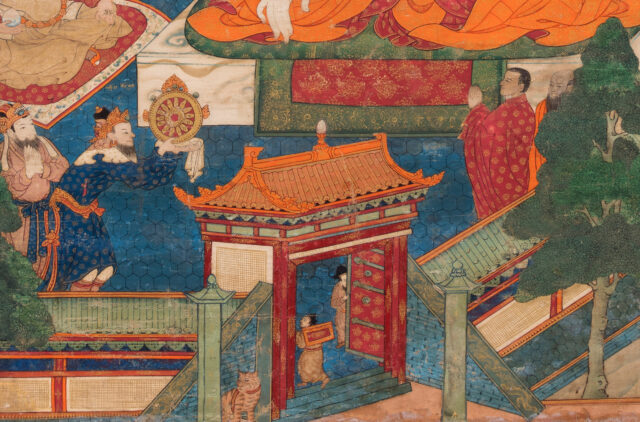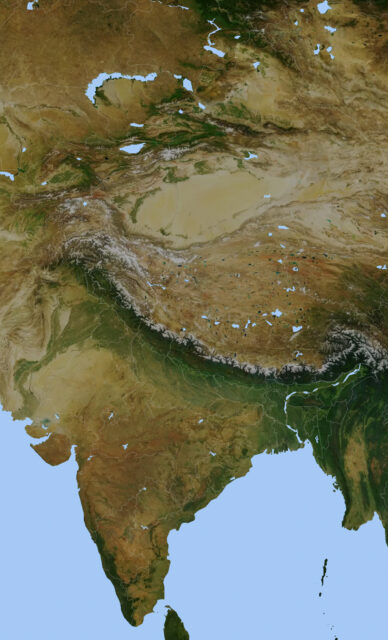The Rubin Museum’s most ambitious and broad-reaching initiative to date, Project Himalayan Art, which encompasses this digital platform, a traveling exhibition, and a publication, would not have been possible without the generous support of many foundations, institutions, and individual donors.
Leadership support for Project Himalayan Art is provided by the Henry Luce Foundation. Lead support is provided by the Ellen Bayard Weedon Foundation, Bob and Lois Baylis, Barbara Bowman, the E. Rhodes & Leona B. Carpenter Foundation, Noah P. Dorsky, Fred Eychaner, Christopher J. Fussner, Matt and Ann Nimetz, the Randleigh Foundation, and Shelley and Donald Rubin. Major support is provided by the Edward & Elizabeth Gardner Foundation, Mimi Gardner Gates, the Monimos Foundation, Rossi & Rossi, Eric and Alexandra Schoenberg, Eileen Caulfield Schwab, and Sandy Song Yan. Special support is provided by Dr. Bibhakar Sunder Shakya to honor the memory and legacy of Professor Dina Bangdel, art historian, curator, cultural activist, and educator from Nepal, and Samphe and Tenzin Lhalungpa to honor the memory and works of L. P. Lhalungpa, Tibetan scholar, broadcaster, and educator. This project is supported, in part, by the National Endowment for the Arts. Project Himalayan Art has also been made possible, in part, by a major grant from the National Endowment for the Humanities: Democracy demands wisdom.
Himalayan Art in 108 Objects—and the larger Project Himalayan Art—has been greatly informed by the time and expertise of the specially assembled Humanities Advisory Group, comprising Kerry Lucinda Brown, professor of art history, Savannah College of Art and Design; Isabelle Charleux, director of research, CNRS (National Centre for Scientific Research); Wen-shing Chou, associate professor of art history, Hunter College and the Graduate Center, City University of New York; Rob Linrothe, associate professor and department chair, Department of Art History, Northwestern University; Christian Luczanits, David L. Snellgrove Senior Lecturer in Tibetan and Buddhist Art, Department of History of Art and Archaeology, SOAS, University of London; Ariana Maki, associate director of the UVA Tibet Center and Bhutan Initiative at the University of Virginia Tibet Center; Annabella Pitkin, associate professor of Buddhism/East Asian religions and director of Asian studies, Lehigh University; Andrew Quintman, associate professor of religion and East Asian studies, Wesleyan University; and Gray Tuttle, Leila Hadley Luce Professor of Modern Tibetan Studies, Department of East Asian Languages and Cultures, Columbia University.
Additional feedback in the development of our list of 108 objects was provided by Ian Alsop, Amy Heller, Alexander von Rospatt, Gautama V. Vajracharya, and Ulrich von Schroeder.
People who helped in the initial stages and in sourcing difficult-to-obtain materials, such as images and reproduction permissions, include Lauran Hartley at Columbia University; Rob Linrothe of Northwestern University; Luo Wenhua of the Palace Museum; Pratapaditya Pal; Karma Phuntsho at Loden Foundation; Shawo Khacham; Uranchimeg Tsultemin at the Herron School of Art and Design, Indiana University; Xie Jisheng of Zhejiang University; Xiong Wenbin at Sichuan University; and many others.
We would like to express special appreciation to the seventy external contributing authors, especially those who wrote or coauthored multiple essays, including Christian Luczanits, Rob Linrothe, Amy Heller, Ian Alsop, Kerry Lucinda Brown, Isabelle Charleux, Charles Ramble, Uranchimeg Tsultemin, John Vincent Bellezza, Jane Casey, Wenshing Chou, David Jackson, Donald J. La Rocca, Ariana Maki, Katherine Anne Paul, Karma Phuntsho, Alexander von Rospatt, Alice Travers, and Roberto Vitali. Thanks also to translators Tenzin Gelek, Xinhui Yang, and Guoying (Stacy) Zhang for allowing a wider range of voices to be represented.
For their perseverance, patience, and diligence thanks to project manager Erin Barnett; copyeditors Lory Frankel and Joe Hannan; foreign language consultants Dotno Dashdorj Pount, William Dewey, and Kristina Dy-Liacco; designer Phil Kovacevich; cartographer Anandaroop Roy; indexer and bibliographer Patrick Booz; image acquisitions assistant Stacey Sherman; project research assistant Hannibal Taubes; and interns Gabriela Espinosa, Yian (Emily) Ren, Xinhui Yang, and Muhan Zhang.
Thanks also to our partners in publishing this book at Scala, Director of Publications Jennifer Norman and Senior Editor Claire Young.
The development of the traveling exhibition, Gateway to Himalayan Art, was shaped by the work of an Exhibitions Advisory Group, including Benjamin Bogin, associate professor and director of Asian studies, Skidmore College; Wen-shing Chou, associate professor of art history, Hunter College and the Graduate Center, City University of New York; Sienna Craig, professor, Department of Anthropology, Dartmouth College; Ariana Maki, associate director of the UVA Tibet Center and Bhutan Initiative at the University of Virginia Tibet Center; Annabella Pitkin, associate professor of Buddhism/East Asian religions and director of Asian studies, Lehigh University; and Brenton Sullivan, associate professor of religion, Colgate University.
For their work on the traveling exhibition, we also thank project collections manager and installation specialist Danielle Butterly; exhibition design consultant Melinda Zoephel; bronze casting collective Foundry Foundation Nepal; bronze artist Tejesh Man Shakya; thangka painter Buchung Nubgya; and members of the Himalayan and Inner Asian communities who lent their voices to the exhibition and Project Himalayan Art at large.
The creation of the digital platform involved expertise and creative thinking from many collaborators. We thank Digital Designer Dan Shields and Digital Developer Adam Squires of CHIPS and Project Himalayan Art Digital Humanities Apprentice Grace Anne Marotta, as well as data specialist Stephanie Fischer, interpretive specialist consultant Jenna Madison, photographer and filmmaker Pranab Joshi, filmmaker Tsewang Lhamo, and filmmaker Tsejin Khando.
We are also grateful to Cecilia Garibay of Garibay Group whose work informed both the traveling exhibition and digital platform.
Heartfelt thanks to staff at the Rubin Museum of Art whose dedication over the last few years has made Project Himalayan Art possible, with unprecedented levels of collaboration and support from Collections Management; Curatorial; Development; Exhibition Design and Implementation; Marketing and Communications; Publications and Editorial; and Visitor Experience and Interpretation.
— Karl Debreczeny and Elena Pakhoutova



